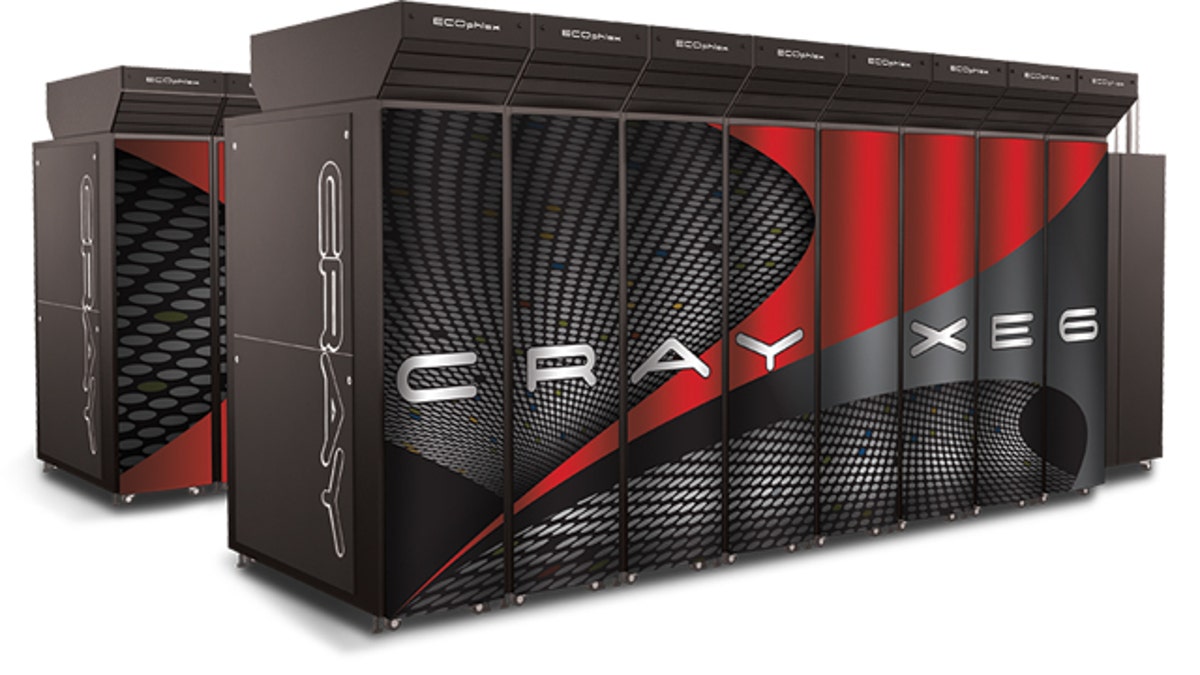
Supercomputer maker Cray said the forthcoming Blue Water supercomputer will be made up of more than 235 Cray XE6 cabinets. (Cray)
CHAMPAIGN, Illinois – The University of Illinois says Seattle-based Cray Inc. will take over construction of the stalled $300 million Blue Waters supercomputer project, three months after IBM pulled out citing cost and technical concerns.
Cray expects to have the computer online next year, keeping the project, which is being primarily paid for by the National Science Foundation, on track to finish on time.
"We clearly had to do it real quickly," said Thom Dunning, the director of the school's National Center for Supercomputing Applications. "NSF's goal was to keep the project on track as much as it possibly could be."
The cost and financing will stay essentially the same, Cray CEO Peter Ungara said. The NSF will provide just over $200 million with the remaining $100 million coming from the university and the state of Illinois. Cray will be paid $188 million, the equivalent of about half of its total revenue from its most recent fiscal year.
"This is a transformational contract for the company," Ungara said. "It's a very big deal for us. It's a huge contract based on the size of the company and we couldn't be more excited about it."
The design and scope of what Blue Waters should be able to do in the years ahead will change, he said.
Once completed, the supercomputer will be used for a range of projects, including the study of how tornadoes are formed and how viruses invade cells.
Blue Waters was announced in 2007 as a project to build what would have been at least briefly the world's fastest computer and a computer that could operate at sustained speeds of a petaflop -- a thousand trillion operations a second and a long-sought standard that makes massive computational projects possible.
There are now a number of computers capable of faster peak speeds, the fastest being the K Computer in Japan.
Blue Waters will still aim to be able to run at petaflop speeds for long periods, but it will also now incorporate graphics processing units, or GPUs, which will increase its power, Dunning and Ungara said. GPUs have tremendous power to allow them to handle high-demand graphics applications, but they've only seriously been applied to general-purpose computing since the Blue Waters project was conceived, Dunning said.
The incorporation of this relatively new use for graphics technology could also extend the computer's life, Ungara said.
"I think we're building a system that almost future-proofs it in many ways," he said.
Blue Waters' will have what Ungara called "a tremendous amount of memory," 1.5 petabytes, a quadrillion bytes. Large amounts of memory were something Dunning said researchers told the university they'd like to see in the project as the university looked for a new builder.
Cray competed to be the builder of Blue Waters when the NSF chose the University of Illinois and IBM in 2007, and Ungara said he'd thought a lot about the project since then, "but it hasn't been anything that's been in our plans or even our dreams over the last couple of years."
But as far back as April, officials at the Supercomputing Center said, it was apparent that there were problems that could derail the project.
When IBM backed out in August, it cited technical and cost concerns about the project, but didn't provide details. A $72 million building built just for the project, the National Petascale Computing Facility, was built on the university campus.
At the time, the NSF said there were no guarantees that the project would continue.
Now, Dunning said, 25 groups from around the world, including several from the university, have tentatively been given time on Blue Waters, with perhaps a dozen ready to go when the computer goes online.
"We'll be holding (the projects) back trying to figure out how we schedule them on the machine," Dunning said.
